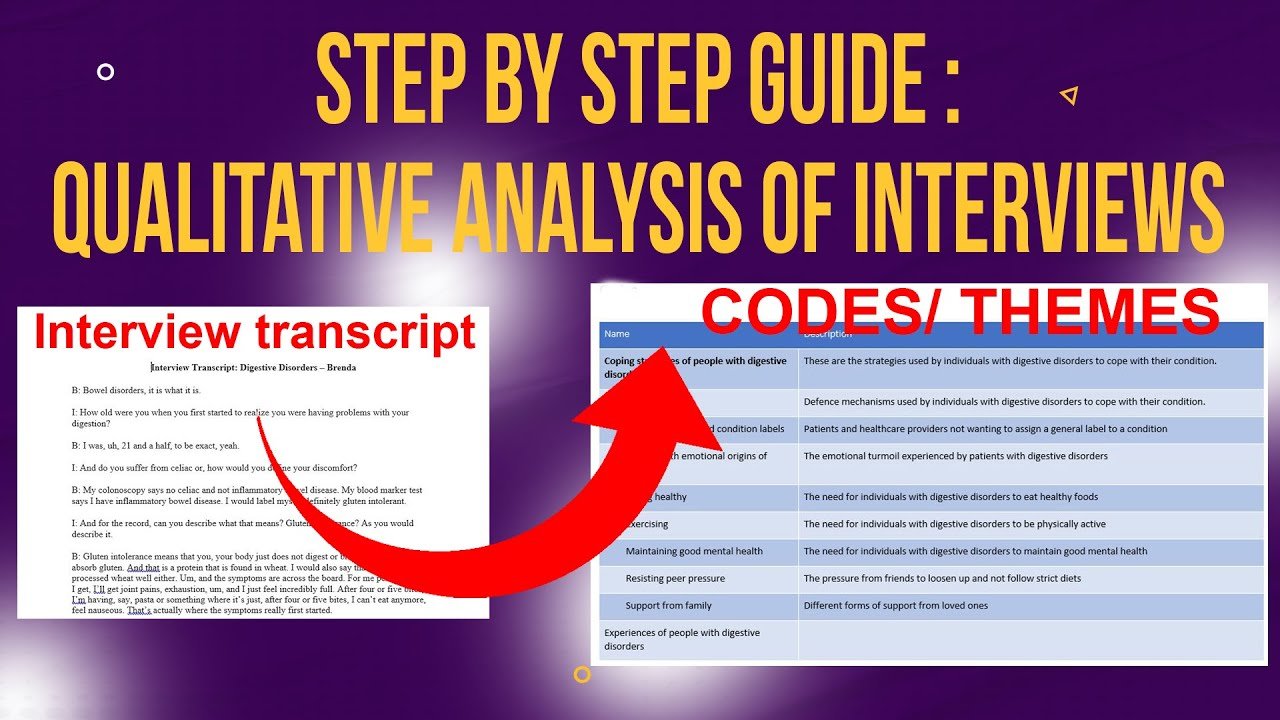Qualitative Coding using Nvivo
In the past article Qualitative Coding with Microsoft Word, I did qualitative coding using Microsoft Word.
In this article, I’m going to do qualitative coding using one of the most popular qualitative data analyses software, which is NVivo.

Nvivo Logo
We’re going to do some coding.
And remember, a code is a label or an interpretive statement to particular information that’s important to our research questions or research objectives.

The Definition of a Code
So, we only code information that’s important to our research questions or research objectives.
Also remember there are two types of codes, which are:
Semantic codes
Semantic codes show the obvious meaning of words.

Semantic Codes Definition
Latent Codes
Latent codes show the deeper meaning of certain statements or words.

Latent Codes Definition
Qualitative Coding with Nvivo
We are going to do the coding now in Nvivo and just try to get some codes on a transcript with an example of a topic.

Qualitative Coding in Nvivo
Before we get to coding, let me first show you where I get my transcripts that I’ll be using for this coding. You go to a website called Figshare.
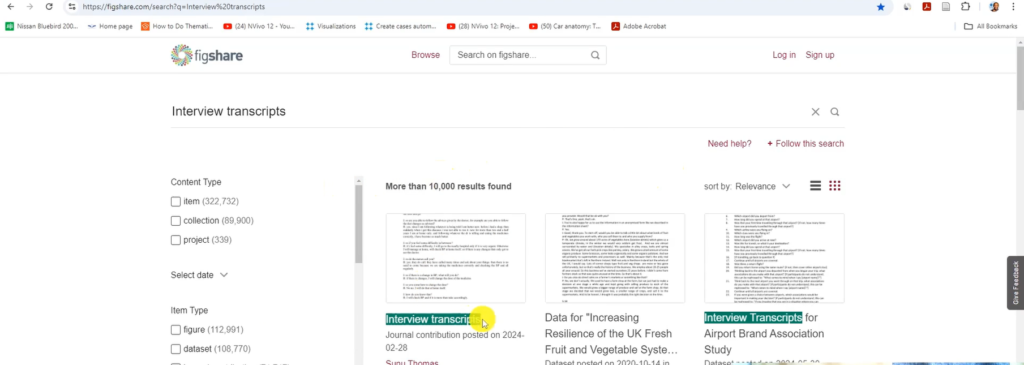
Figshare Screenshot
And you search for transcripts and you can see different transcripts that you can use to practice how to code and to do thematic analysis through this website called Figshare.
This is where I get the transcripts I use for my videos.
With that out of the way, let me show you the transcript that we are going to analyse. We are going to analyse this transcript.
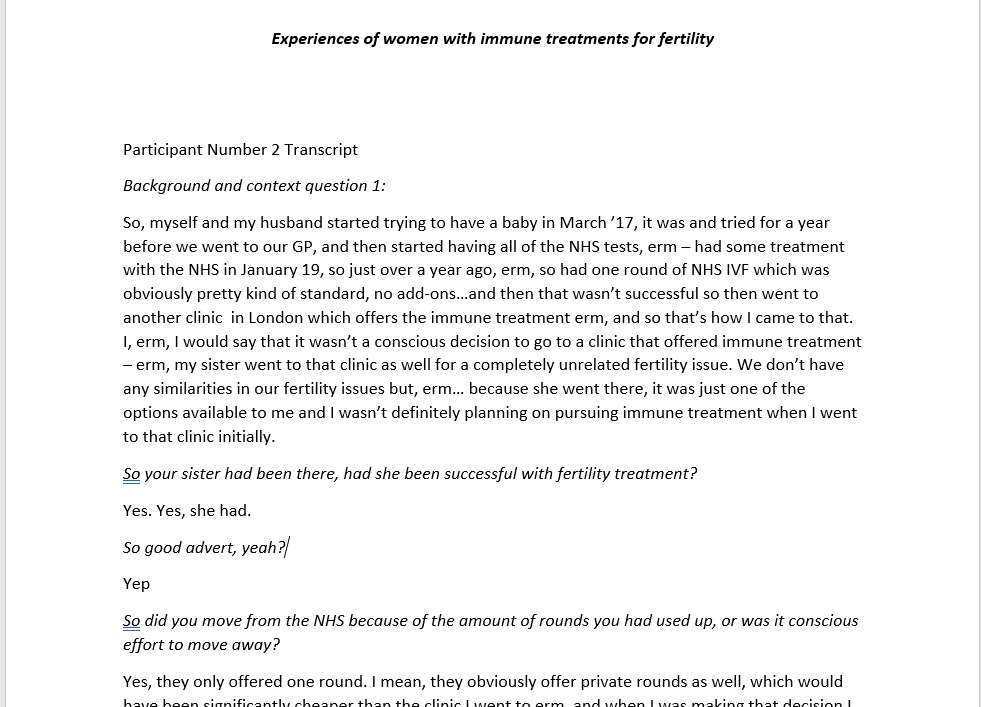
A Screenshot of the Transcript
The topic that I’m going to focus on for this video is the experiences of women with immune treatments.
I am going to open Nvivo.
Then I’ll show you some basics of Nvivo.
When you open Nvivo the first time, this is what you see.
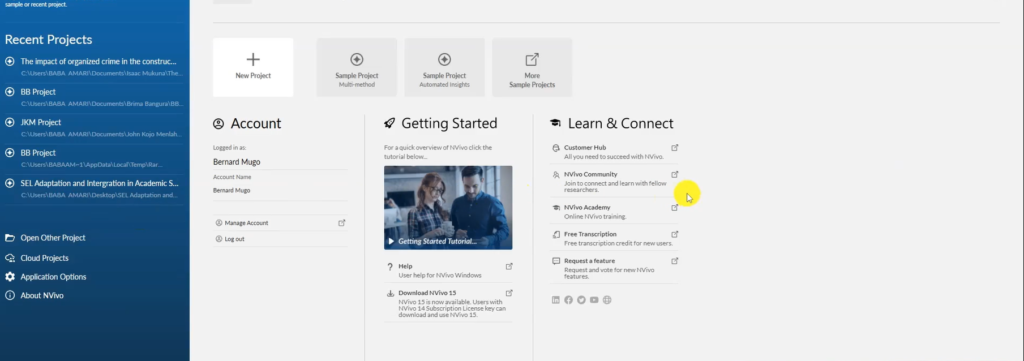
An Overview of Nvivo
The first thing you should do is click on new project area and call these qualitative coding example and then click next.
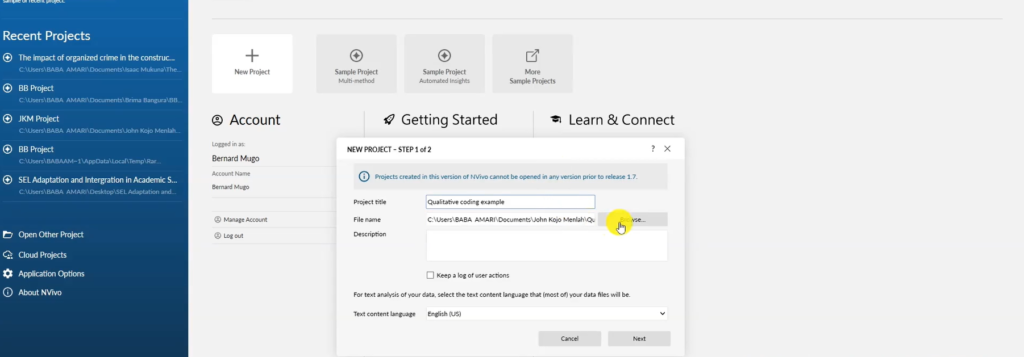
The Creation of a Project in Nvivo
Again, here, you have to select the auto save project option, should be say no, and display save reminder every 10 to 15 minutes.
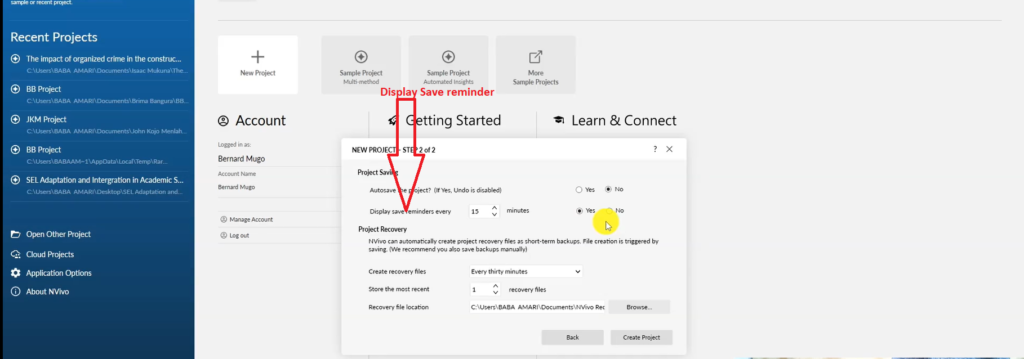
Display Save Reminder in Nvivo
Why? Because if you allow Nvivo to auto save your project, sometimes it crashes and your work will disappear.
So have a save reminder every 15 to 10 minutes as you are working, then create project.
Now let’s look inside Nvivo.
Nvivo has a different menus but we will be using the blue menu.
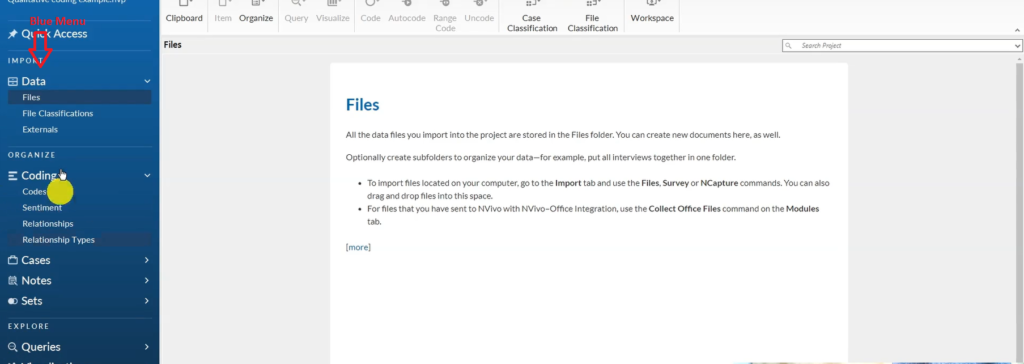
Blue Menu in Nvivo
Let’s use the blue menu. As a beginner, just focus on the files area. In the data area we have files, and in the coding area we have codes.
So, files and code, these are the two areas we are going to use.
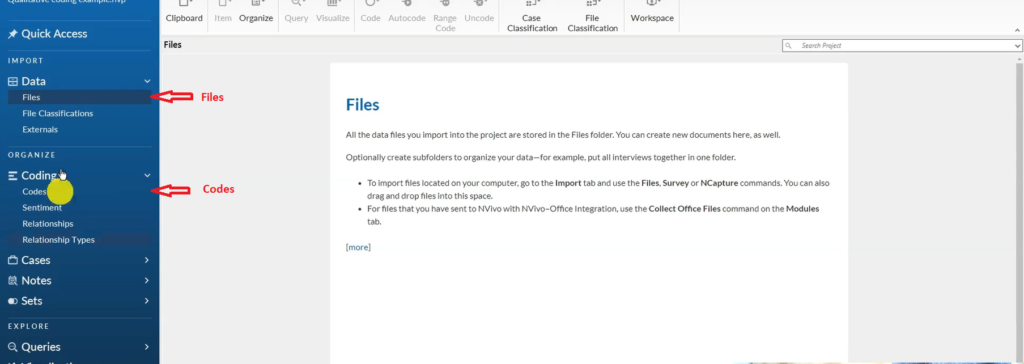
The Files and the Codes Area in Nvivo
Let’s go to importing the transcript.
There are two ways to import transcripts into NVivo. First, we can go to the transcript, drag it and drop it inside.
You can also go to import in the top menu files. Then go grab the document and open. And that’s another way of importing documents into Nvivo.
Now we have imported our document.
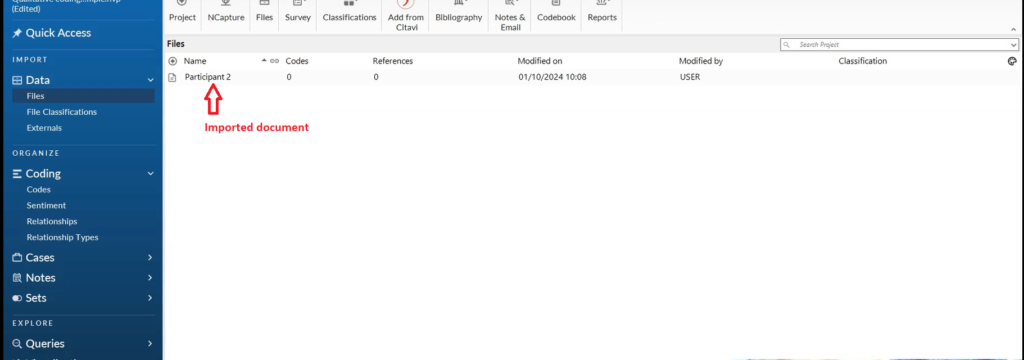
An Imported Document in the Nvivo
And I have told you that we are only going to use the files and the codes section.
In the file section, let’s double click on our transcript. This is the transcript.
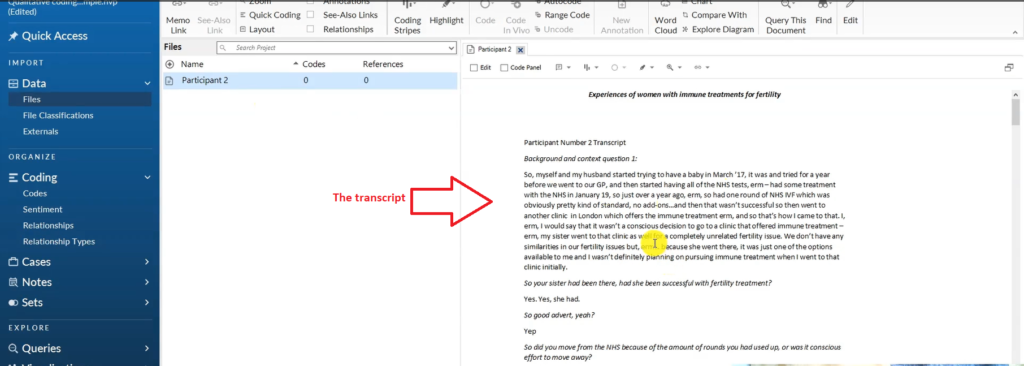
The Transcript in the Files Section
And then let’s click on the code section.
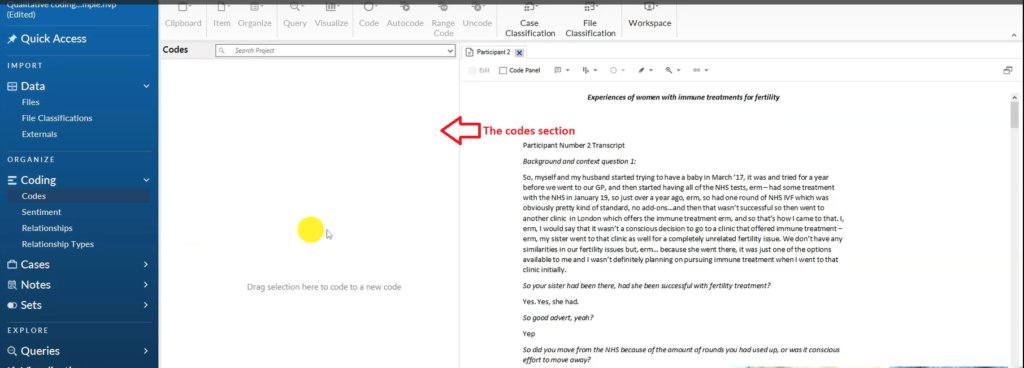
The Codes Section in Nvivo
We are going to drag and drop the statements or the interviewee quotes in the codes section.
Experiences of women with immune treatments for fertility is what we are trying to code. Remember, we are doing qualitative coding. Let’s just read.
This is the background and contact question one.
“So myself and my husband started trying to have a baby in March 2017.I tried for a year before we went to our GP.“
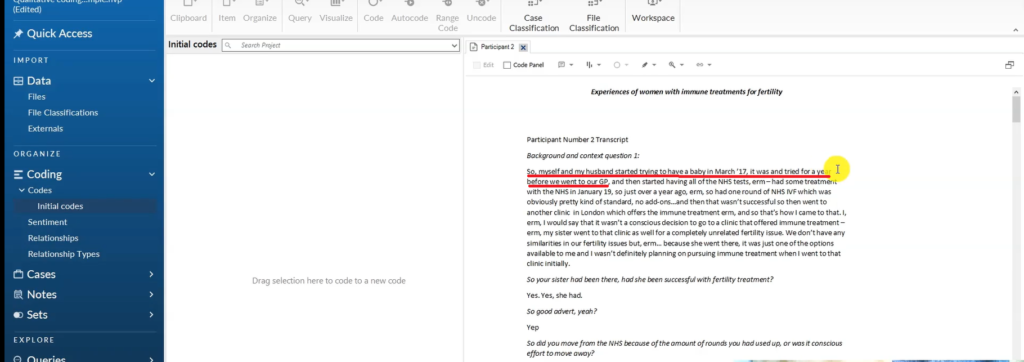
A Section of the Transcript
We can drag and drop the statement in the codes section. If you drag and drop, this dialog box will pop and we can say,
Tried to conceive for a year with no success. And click OK.
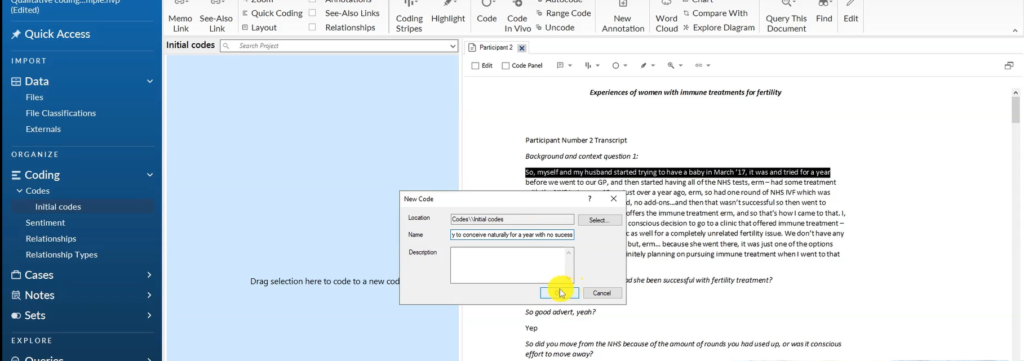
The Code Tried to Conceive for a year with no Success is Created
“And then started having all the NHS tests. Had some treatment with NHS in January 19, just over a year ago, so had one round of NHS IVF, which was obviously pretty kind of standard, no add ons, and that wasn’t successful.”
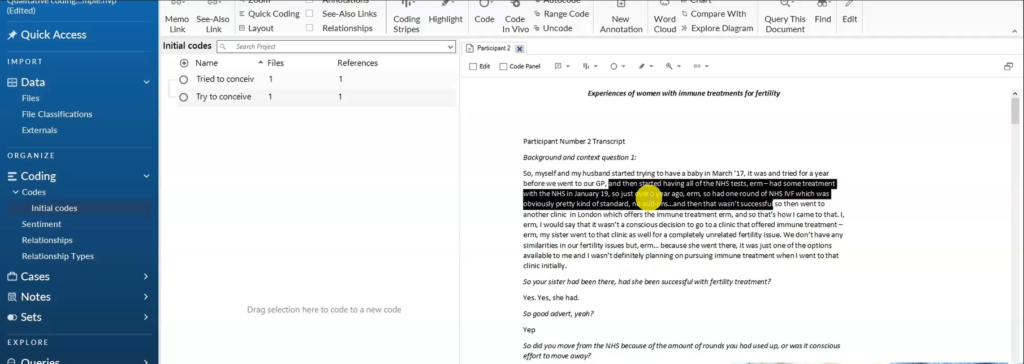
A Section of the Transcript
All this section where they are saying that they started NHS test, then they had NHS IVF treatment, which was not successful.
I’m going to drag and drop that in the codes section and say, had NHS IVF fertility treatments, which were not successful. Click OK. That’s another code.
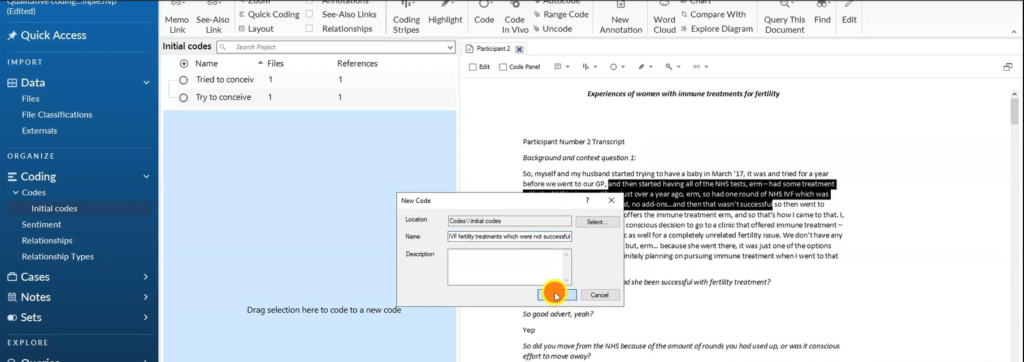
The Code Had NHS IVF Fertility Treatments, which were not Successful is Created
You can see now we have two codes and we keep doing the qualitative coding.
“So, then we went to another clinic in London which offers immune treatment. And that’s how I came to that. I won’t say that it was a conscious decision to go to a clinic that offered immune treatment.
My sister went to that clinic as well for a completely unrelated fertility issue. We don’t have any similarities in our fertility issues, but because she went there, it was just one of the options available to me. I was definitely planning on pursuing immune treatment when I went to that clinic initially.”
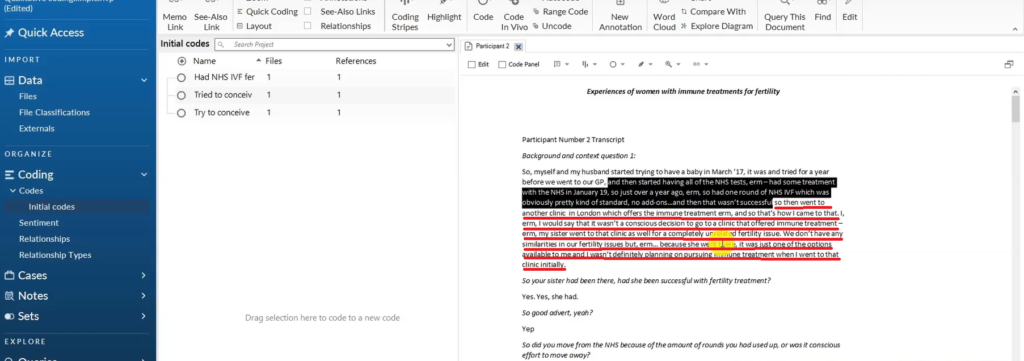
A Section of the Transcript
All that statement can be, referred by sister for immune treatment for fertility. Okay.
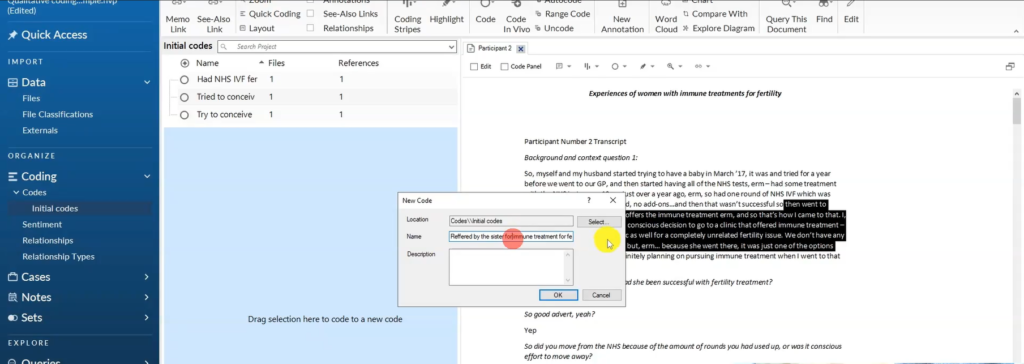
The Code Referred by Sister for Immune Treatment for Fertility is Created
“So, your sister had been there. Had she been successful with fertility treatment? Yes, she had. So good advice. Yeah, yeah.”
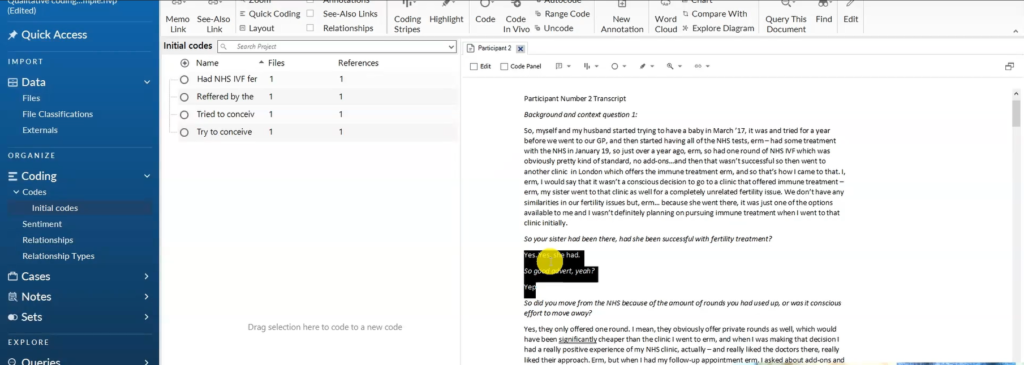
A Section of the Transcript
We can imply here all these issues that past success of the sister with immune treatment for fertility influenced interviewee’s decision to procure the same treatment.
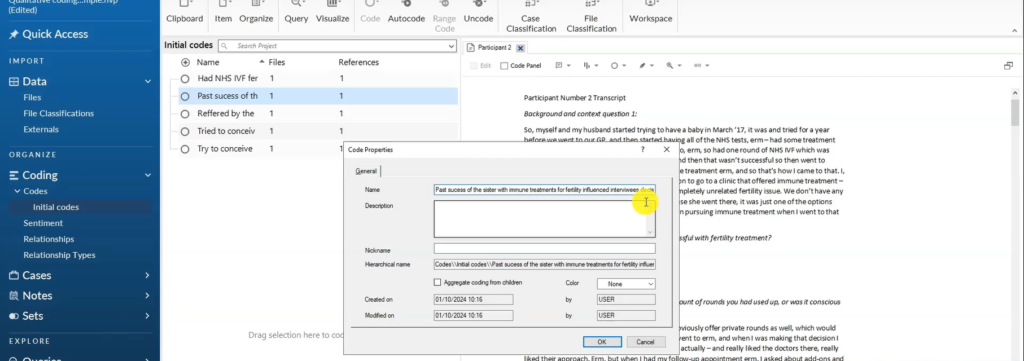
The Code Past Success of the Sister with Immune Treatment for Fertility Influenced Interviewee’s Decision to Procure the Same Treatment is Created
You can see I have four codes already. And we keep going.
“When I was making that decision, I had really a positive experience of my NHS clinic.”
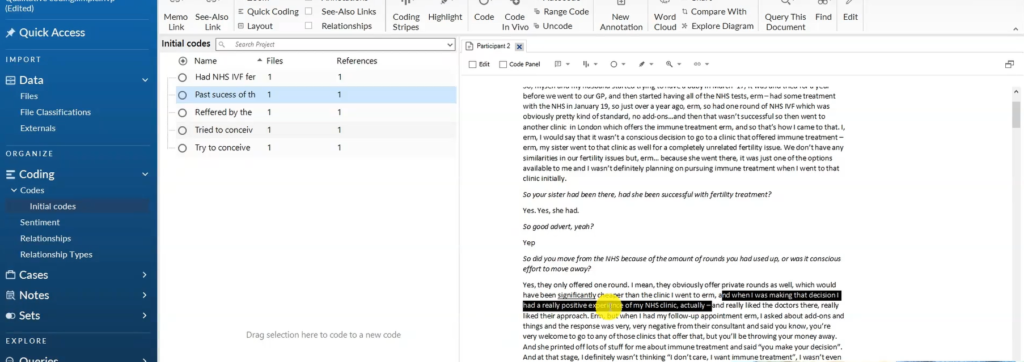
A Section of the Transcript
We code this as, had a positive experience procuring immune treatment for fertility in an NHS clinic.
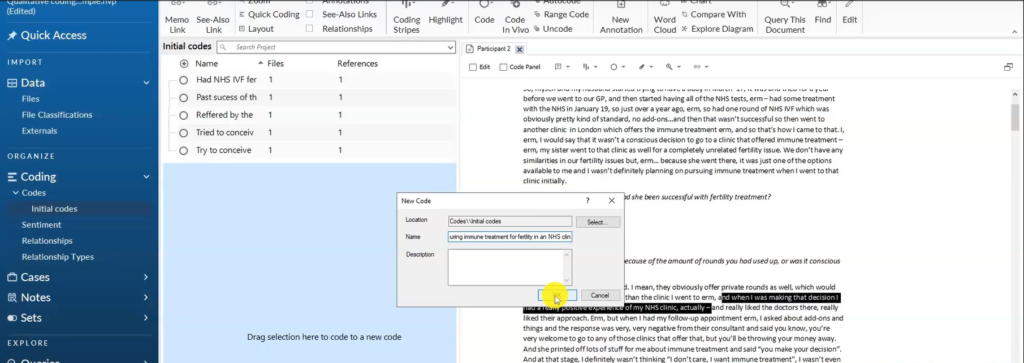
The Code Had a Positive Experience Procuring Immune Treatment for Fertility in an NHS Clinic is Created
Those are the different codes we have generated.
And we can keep coding the whole transcript when you are doing qualitative coding, you have to go through your whole transcript and keep coding.
I went ahead and got all the codes, but this is how we get qualitative codes.
Now for Nvivo, it’s very easy to retrieve the codes when you do coding and that’s why we use that software because it allows you to track things easily and to manage them and to be able to combine codes easily to form themes.
And that’s how we perform qualitative coding using Nvivo.
I have detailed articles that I have done before that will explain to you how we do qualitative coding and how we even get themes after we get codes.
Thematic Analysis Examples: Inductive and Deductive (step by step) is an example of such articles that you can check out.
